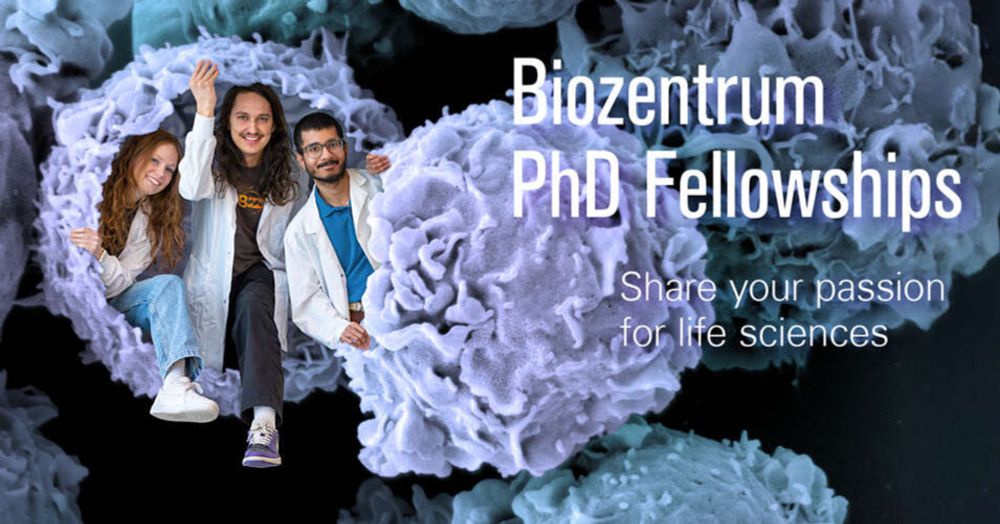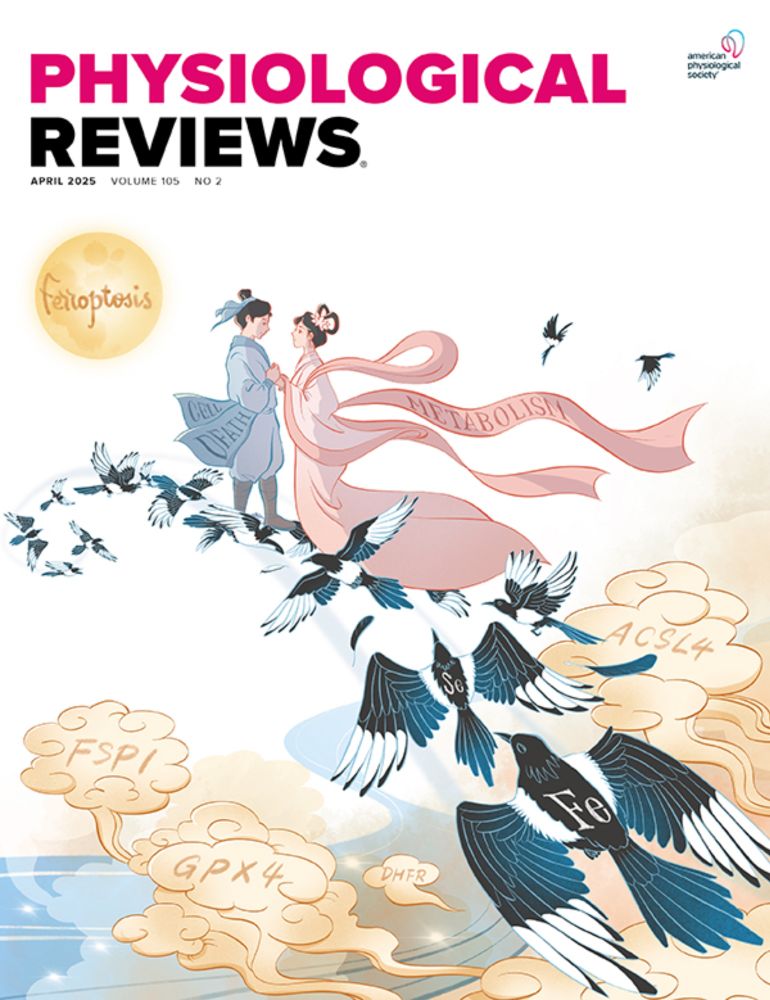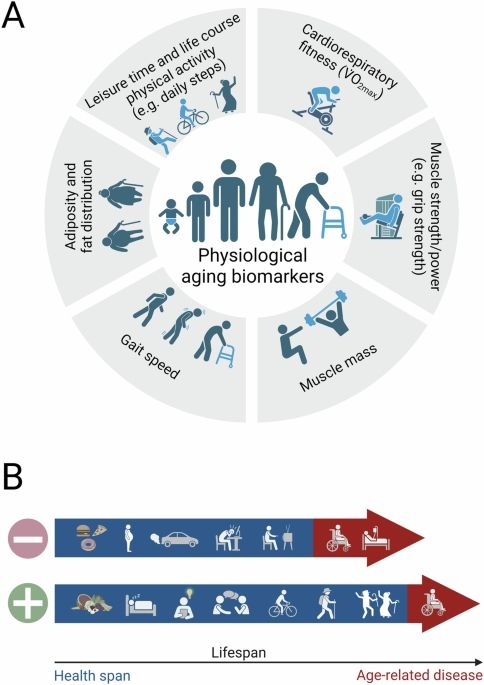Great - thanks!
20.08.2025 12:34 — 👍 0 🔁 0 💬 0 📌 0
Hi Monica,
could you add me to Science feed please? Thanks!
Google Scholar: scholar.google.com/citations?us...
20.08.2025 09:15 — 👍 1 🔁 0 💬 1 📌 0

Biozentrum PhD Fellowships
Share your passion for life sciences. If you are talented and highly motivated, want to broaden your horizons and are interested in a wide range of research topics, apply for one of the sought after B...
Apply now for the prestigious and independent #BiozentrumPhDFellowships. Great science. Unique rotation-based selection of research group and other incentives. The summer call is open until October 12, 2025. bit.ly/4caiqqX @biozentrum.unibas.ch @unibas.ch #fellowship #PhD#Switzerland
04.08.2025 11:40 — 👍 15 🔁 16 💬 0 📌 1
The first time Charlie Chaplin used his voice in a film, he wielded it to forcefully condemn the rising forces of fascism around the globe.
Will we listen to his words today?
10.07.2025 17:02 — 👍 30854 🔁 12714 💬 943 📌 1061

A female scientist in a lab coat is using a microscope to examine a sample.
In today's read from Function, APS CEO Scott Steen explains where we, and #physiology, go from here during this time "of unprecedented challenge for science in the United States." ow.ly/zTTT50Wj8bz #WeArePhysiology 🧪 @apspublications.bsky.social
10.07.2025 13:00 — 👍 2 🔁 1 💬 0 📌 0

#OpenAccess: Review from Physiological Reviews, Biomarkers of #aging: from molecules and surrogates to physiology and function
Regula Furrer and Christoph Handschin
🖱️doi.org/10.1152/phys...
#exercise #healthspan #longevity @unibas.ch
24.06.2025 12:00 — 👍 3 🔁 2 💬 0 📌 0
This just in from @apsphysiology.bsky.social
"Early reports indicate that the Trump administration’s proposed FY 2026 budget would slash funding for the NIH by more than 40%, cutting the budget from $47 billion to $27 billion. The APS urges Congress to reject this catastrophic proposal..."
23.04.2025 12:38 — 👍 0 🔁 1 💬 0 📌 0

Biomarkers of aging: from molecules and surrogates to physiology and function | Physiological Reviews | American Physiological Society
Many countries face an unprecedented challenge in aging demographics. This has led to an exponential growth in research on aging, which, coupled to a massive financial influx of funding in the private and public sectors, has resulted in seminal insights into the underpinnings of this biological process. However, critical validation in humans has been hampered by the limited translatability of results obtained in model organisms, additionally confined by the need for extremely time-consuming clinical studies in the ostensible absence of robust biomarkers that would allow monitoring in shorter time frames. In the future, molecular parameters might hold great promise in this regard. In contrast, biomarkers centered on function, resilience, and frailty are available at the present time, with proven predictive value for morbidity and mortality. In this review, the current knowledge of molecular and physiological aspects of human aging, potential antiaging strategies, and the basis, evidence, and potential application of physiological biomarkers in human aging are discussed.
Now out in the typeset, final version! #openaccess
"Biomarkers of aging: from molecules and surrogates to physiology and function"
@apspublications.bsky.social @apsphysiology.bsky.social @regula-furrer.bsky.social @biozentrum.unibas.ch @unibas.ch
doi.org/10.1152/phys...
22.04.2025 13:49 — 👍 7 🔁 2 💬 0 📌 0

Resist, eggheads! Universities are not as weak as they have chosen to be.
Opinion: It’s time for public resistance.
"This moment calls out for moral clarity and resolve. It asks universities to take their mission in society seriously and to resist being co-opted by government forces."
@arstechnica.com
arstechnica.com/culture/2025...
22.04.2025 07:01 — 👍 0 🔁 0 💬 0 📌 0

Krüppel-like factor 5 remodels lipid metabolism in exercised skeletal muscle
Regular physical activity induces a variety of health benefits, preventing and counteracting diseases caused by a sedentary lifestyle. However, the mo…
What the is early stress response in exercised #muscle for? At least for Klf5, this seems important to shape lipid homeostasis in the acute (fatty acid metabolism) and chronic (lipid synthesis) settings. All this and more in our new paper:
#myoblue
www.sciencedirect.com/science/arti...
21.04.2025 11:41 — 👍 3 🔁 2 💬 0 📌 0

Changes that could improve healthy aging.
8.) Our current health care setting fails to prioritize such measures. What could be done to improve the situation? On the level of the individual person, health care professionals, health insurance providers, society and politics. How could we pay for this?
8/9
28.03.2025 12:54 — 👍 0 🔁 0 💬 1 📌 0

Various biomarkers of aging, with different degrees of clinical evidence.
7.) In contrast for physiological, functional and anthropometric biomarkers, solid and broad human data exist! E.g. #VO2max, body composition (muscle and #fat mass/distribution), #muscle force and power, activity levels, gait speed and other frailty markers.
7/9
28.03.2025 12:54 — 👍 0 🔁 0 💬 1 📌 0

Molecular "clocks" and biomarkers of aging.
6.) How measure aging trajectories or "biological age"? Current state of molecular #biomarkers, e.g. #epigenetic marks, plasma proteomics or #telomere length.
6/9
28.03.2025 12:54 — 👍 0 🔁 0 💬 1 📌 0

Modifiers of healthy aging with solid and broad data in humans.
5.) What does work? Interventions with solid data on human aging, #morbidity, #mortality and/or #longevity: physical activity, #sleep, #nutrition, #stress, social interactions, socioeconomic disparities, #climatechange and much more!
5/9
28.03.2025 12:54 — 👍 1 🔁 0 💬 2 📌 0

Molecular and cellular hallmarks of aging, and the proposed drugs and interventions that could modify these.
4.) Proposed "#anti-aging drugs" and interventions in human aging, e.g. #rapamycin, #metformin, #resveratrol, but also #reprogramming, #rejuvenation, #caloric restriction. Potentially negative effects on other health-beneficial interventions (e.g. #exercise).
4/9
28.03.2025 12:54 — 👍 0 🔁 0 💬 1 📌 0

Old (left side) and young (right side) mouse.
2.) How to study aging? E.g. Genetic diseases of "accelerated aging" (e.g. #progeria), (super-) #centenarians and geography (e.g. in a so-called #BlueZone).
3.) How might human aging differ from that in animals? What could this mean for the study of model organisms in this field?
3/9
28.03.2025 12:54 — 👍 0 🔁 0 💬 1 📌 0

Anthropometric, functional and physiological hallmarks of aging.
1.) What is aging? An inevitable normal biological process? A disease that can be treated or even cured? In any case, aging is one of the strongest risk factors for many (mostly chronic diseases), e.g. #cancer, #neurodegeneration and #dementia, or #cardiovascular pathologies.
2/9
28.03.2025 12:54 — 👍 0 🔁 0 💬 1 📌 0

Biomarkers of aging: from molecules and surrogates to physiology and function | Physiological Reviews | American Physiological Society
Many countries face an unprecedented challenge in aging demographics. This has led to an exponential growth in research of aging, which, coupled to a massive financial influx of funding in the private and public sectors, has resulted in seminal insights into the underpinnings of this biological process. However, critical validation in humans have been hampered by the limited translatability of results obtained in model organisms, additionally confined by the need for extremely time-consuming clinical studies in the ostensible absence of robust biomarkers that would allow monitoring in shorter time frames. In the future, molecular parameters might hold great promise in this regard. In contrast, biomarkers centered on function, resilience and frailty are available at the present time, with proven predictive value for morbidity and mortality. In this review, the current knowledge of molecular and physiological aspects of human aging, potential anti-aging strategies, and the basis, evidence, and potential application of physiological biomarkers in human aging are discussed.
Our magnum opus on everything related to #aging is out as a preprint in Physiological Reviews @apspublications.bsky.social @apsphysiology.bsky.social #openaccess. Great collaboration with @regula-furrer.bsky.social @biozentrum.unibas.ch @unibas.ch.
doi.org/10.1152/phys...
Some teasers:
🧵 1/9
28.03.2025 12:54 — 👍 26 🔁 10 💬 1 📌 0
Mike spotted this before the rest of us. 🫡
Publications from 2025 are shared more on Bluesky than on X/Twitter.
13.03.2025 15:51 — 👍 1772 🔁 432 💬 17 📌 58

Dysferlin deficiency causes metabolic dysregulation, characterized by mitochondrial abnormalities and death signaling as well as elevated glucose uptake and excessive glycogen accumulation in muscle @biozentrum.unibas.ch @regula-furrer.bsky.social @c-handschin.bsky.social buff.ly/xMvVaxk
10.03.2025 15:04 — 👍 3 🔁 2 💬 0 📌 0
It's really cute that you're gonna "defeat me with the power of friendship and all," but again, I am the devil from the Bible
fascists not welcome
Better than the one on twitter.
EST. 1996 • Boston, Mass.
https://linktr.ee/dropkickmurphys
The official "Resistance" team of U.S. National Park Service. Our website: www.ourparks.org
The American Physiological Society (APS) publishes 16 respected scientific journals that advance physiological research and communicate discoveries in physiology and medicine. Publish with Purpose (TM) in APS Publications. https://journals.physiology.org
The American Physiological Society empowers scientists to understand life, improve health and advance discoveries.
https://www.physiology.org/
Professor Univ. of Copenhagen, Vice Director Novo Nordisk Foundation Center for Basic Metabolic Research, Metabolic Signaling, glucose metabolism, AMPK
IBEC 2026: Exercise and Healthspan. Fralin Biomedical Research Institute at VTC, Roanoke VA, USA.
🏃♂️🏃♀️🏋🏋️♀️🧬🔬🧑🔬👩🔬
Send a Chat with any questions and we look forward to seeing you in 2026 in Roanoke!!
Professor I
Trying to speak my mind about the relevance of molecular processes in physiology and nutrition I
Reviews Editor in Eur J Appl Physiol |
https://nikolaidis.weebly.com/
America’s Finest News Source. A @globaltetrahedron.bsky.social subsidiary.
Get the paper delivered to your door: membership.theonion.com
News, aber deep. 🤿
Bei uns findest du News, Unterhaltung und Debatten.
Mehr von uns👇🏼
TikTok: tiktok.com/@watson_news
Instagram: instagram.com/watson_news
Entrepreneur
Costplusdrugs.com
Hello everyone! Welcome to the official Bluesky account for the Rudnicki Lab. We study the biology of skeletal muscle stem cells 🔬🧫🧬 | Ottawa, ON, Canada 🇨🇦
Scientist trying to link cell biology and physiology.
Skeletal muscle regeneration with a strong penchant for macrophages.
Director of Research @ Inserm, Lyon, France
Scientist at the Biozentrum, University of Basel, Switzerland | Molecular Exercise Physiology | Muscle Plasticity | Aging | Cachexia | Exercise is Medicine
Studying muscle in the Ozark mountains - M3R Lab. Bourbon aficionado. Amateur watch builder. Average exerciser. My wife says I’m a “six wing five”.
https://musclemasslab.uark.edu/
We study how muscles are built to sustain power with a focus on mitochondrial energy metabolism.
 27.08.2025 13:11 — 👍 8046 🔁 1081 💬 180 📌 172
27.08.2025 13:11 — 👍 8046 🔁 1081 💬 180 📌 172























